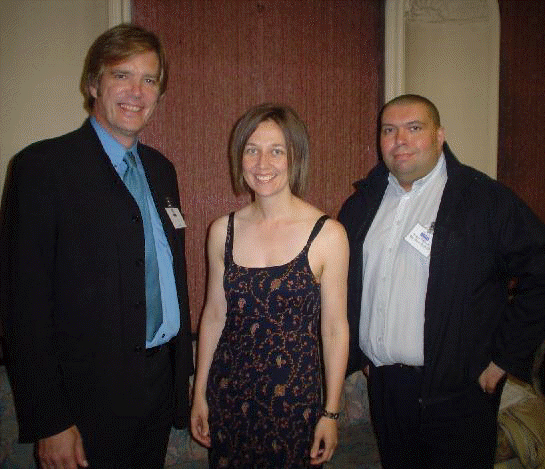
The
Linda Gage Memorial Award - 2003
For the seventh year, entries were invited for short features which demonstrate entrant’s production skills, The competition was open to all those on recognised radio or media training courses. The judges looked for an innovative piece of radio (a short feature up to 4 minutes in duration) that demonstrated production and presentation skills and which made full creative use of the medium of sound. The judges assessed entries on the technical quality, editorial content and overall production. This year saw entries from students studying at a wide range of colleges around the country.
This year’s prize included a portable mini disc recorder, a place at the Radio Festival and a year's subscription to The RADIO Magazine.
The winning entry was submitted by Fiona Harris, a student from Goldsmiths College in London.
In making the award to Fiona Harris, the judges commented that her entry "Story" was an attention-grabbing surreal and unique creation that successfully pushed the boundaries of creative production. Click here for the judges comments in full.
The award was presented to Fiona at the Radio Festival in Birmingham on the 7th July.
We are grateful to Independent Radio News, Broadcast Training Ltd, The Radio Magazine and the Radio Academy for supporting this year's prizes.

This year's winner, Fiona Harris with the judges, Nick Hirst (left) and Angus Moorat (right).
The Linda Gage Memorial Award 2003
Judges Comments
This is the seventh year the competition has run and has attracted entries from a wide range of colleges and universities around the United Kingdom.
The brief was to produce a short radio feature that makes creative use of the medium of sound and demonstrates the entrant's production skills. The judges are looking for pieces that are well produced. Technically this takes into account editing, mixing, levels and the overall quality of recorded sound. Creative production is important and the use of music and sound effects should add to the piece. Presentation is vital - it should be lively, authoritative and tell the story. The judges also look for strong editorial content. The story should have a strong cue that grabs the listener's attention and puts the piece in context, and the actual piece should have a hook at the beginning, a middle and a conclusion. Interviewees should be relevant to the subject.
Generally the technical quality was much higher than previous years, possibly due to a greater use of digital recording and editing equipment. However, a fault amongst some entries was an apparent lack of understanding of the importance of the legal requirement for unbiased radio news. A number of entries seemed to think that the only way to conclude a piece was to tack on an editorial comment which, in effect, rendered the piece unbroadcastable under current legislation. It was a fault that extended across more than one college's entries including broadcast journalism courses. One entry covered a potentially controversial story from only one perspective, completely ignoring any requirement for balance. It sounded more like an advertorial than a piece of radio.
Another common fault was that the producer hadn't identified the target audience (a criticism that could be levelled at a number of professionals!). A number of entries displayed a lack of knowledge of copyright laws and requirements
We received a number of entries from one particular college that were all of a consistently low standard. Technically they were very poor quality and editorially they suffered from a lack of imagination and were dreadfully put together with universally poor presentation. Where there were interviews they sounded fake. There was clearly a lack of understanding of what works on radio.
It is essential that students read and understand the brief for the competition, particularly with regard to the duration of entries. One very well produced entry lasted almost 15 minutes. Students should also check their recordings before submitting them as we received a number of blank mini discs!
Against this there was one clear winner. Fiona Harris's feature 'Story' was hugely imaginative and ambitious that successfully pushed the boundaries of creative production. The feature explores how one story told to a number of different people can become infinitely more than the original. It is very well executed with interesting intercutting and overlaying in the mix to quicken the pace. Technically very confident, good consistent levels and well balanced use of music. This was an attention-grabbing surreal and unique creation, which deserves a wider audience.
Nick Hirst/Angus Moorat
July 2003